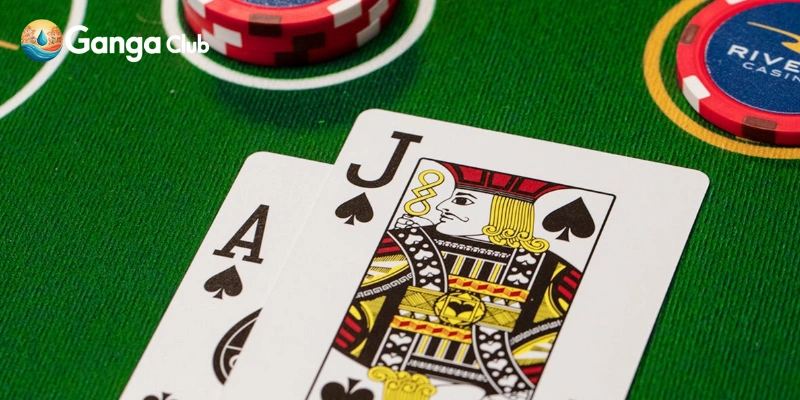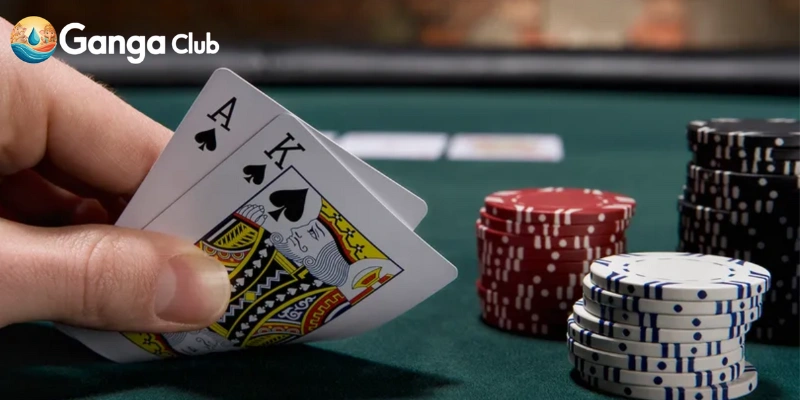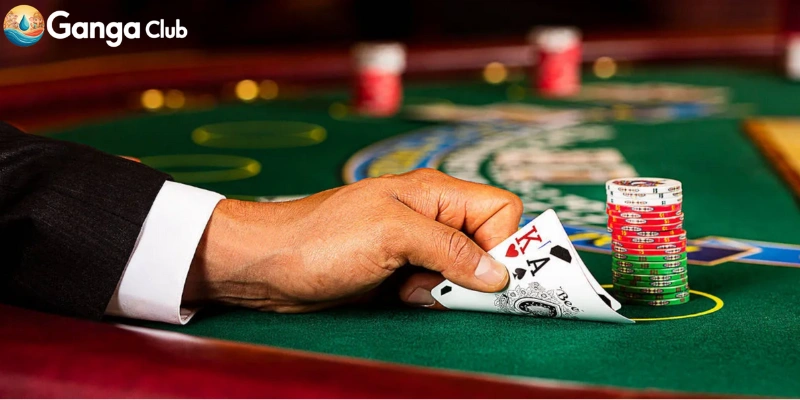Blackjack is one of the few casino games where strategy truly makes a difference. Simply knowing the rules isn’t enough; This comprehensive guide provides the complete Basic Strategy, teaching you exactly how to play optimally and consistently beat the house at Ganga Club.
1. Section 1: Why Basic Blackjack Strategy Matters
Blackjack offers the most favorable odds to the player of almost any game in the casino, but only if you play perfectly. That perfection is achieved through the use of Basic Strategy—a mathematically proven guide for every decision you face.
The True Goal: Not 21, but Beating the Dealer
The common misconception is that the goal is to get as close to 21 as possible. The real goal is to beat the dealer’s final hand without going over 21. Because the dealer has fixed rules they must follow (like standing on 17), your decisions must be based on the dealer’s visible upcard.
Reducing the House Edge with Basic Strategy
Without strategy, the house edge in Blackjack hovers around 2% to 5%. By diligently applying Basic Strategy—the optimal play for every combination of your hand total versus the dealer’s upcard—you can reduce the house edge to as low as 0.5%. This minuscule margin is why smart play is paramount at Ganga Club.
2. Section 2: The Core: Mastering Basic Strategy (The Chart)
Basic Blackjack strategy is divided into three main categories of decisions: Hard Totals, Soft Totals, and Pairs. Always consult a strategy chart based on the specific rules of the table you are playing (e.g., how many decks, or if the dealer hits on a soft 17).
Strategy for Hard Totals (No Ace or Ace counted as 1)
A “hard” hand is one where you don’t have an Ace, or if you do, the Ace must count as 1 to avoid a bust.

Key Takeaway: When the dealer shows a weak card (2 through 6), they are more likely to bust. This is when you should be aggressive (Double Down) or stand on totals as low as 12.
Strategy for Soft Totals (With an Ace counted as 11)
A “soft” hand contains an Ace counted as 11, giving you flexibility since the Ace can revert to 1 if you hit and go over 21.
Key Takeaway: You should almost always Hit on soft totals under 18 unless the dealer shows a low card (2-6), which provides opportunities to Double Down.
3. Section 3: Advanced Decisions: Splitting and Doubling Down
These two actions are the most profitable moves in Blackjack strategy, as they allow you to increase your wager when the odds are temporarily in your favor.
When to Double Down for Maximum Profit
Doubling down means you instantly double your initial bet in exchange for exactly one more card. You should only double down when your chance of receiving a strong card and winning the hand is highest.

- 11 is Non-Negotiable: Always Double Down on a hard 11, regardless of the dealer’s upcard (unless the dealer has an Ace).
- 10 is Strong: Double Down on a hard 10 unless the dealer shows a 10 or an Ace.
When to Split Pairs (The Must-Do Splits)
Splitting pairs allows you to turn one mediocre hand into two potentially strong ones by matching your original wager on the new hand.
Always Split Aces and 8s: This is the foundational rule of Blackjack strategy. Aces should always be split because 11 is the best starting hand. 8s should always be split because 16 is the worst possible hard total—splitting them turns one terrible hand into two hands starting at 8.
Never Split 10s or 5s: Two 10s is a total of 20—a winning hand you should never risk. Two 5s is a total of 10, which is perfect for doubling down, not splitting. Pair of 9s: Stand against a dealer’s 7, 10, or Ace. Split against everything else. Split against everything else.
4. Section 4: Three Mistakes to Avoid and Money Management
Even with a perfect Blackjack strategy chart, emotional decisions can ruin your edge. Discipline and bankroll management are the keys to long-term success.
The Temptation of Insurance and Side Bets
The Insurance bet is offered only when the dealer’s up card is an Ace. The bet wins and pays 2 to 1 if the dealer has Blackjack. Statistically, the dealer only has a 10-value card roughly 30.7% of the time. This makes the insurance bet a mathematically poor choice with a high house edge. Never take the Insurance bet. Similarly, all exotic side bets (like “Perfect Pairs”) should be avoided as they drastically increase the house edge.
Never Splitting 10s or 5s
As mentioned above, resisting the urge to split certain pairs is as crucial as knowing when to split others. Splitting 10s sacrifices a guaranteed win, while splitting 5s turns a powerful starting hand (10) into two weak hands that can easily bust.
Disciplined Bankroll Management
The best Blackjack strategy in the world won’t save you if you bet too aggressively. Set Budgetary Limits: Only wager money that you can comfortably afford to lose. Unit Size: Decide on a standard betting unit (e.g., 1-2% of your total bankroll) and stick to it. Avoid chasing losses by suddenly doubling your unit size.
5. Section 5: Playing Smart Blackjack Strategy at Ganga Club
To maximize your 0.5% edge, you must choose your tables wisely at Ganga Club by understanding how specific house rules affect the odds.
Table Rules: Hitting Soft 17 (H17 vs. S17)
When browsing the Live Dealer or RNG Blackjack tables, look for the rule that dictates the dealer’s action on a Soft 17 (an Ace and a 6).

Dealer Stands on Soft 17 (S17): This is the most player-favorable rule. It lowers the house edge. Dealer Hits on Soft 17 (H17): This marginally raises the house edge for the casino. Always prioritize tables that use the S17 rule set when available.
Choose Low House Edge Tables (Live Dealer vs. RNG)
Live Dealer Tables: Often feature better rules (like 3:2 payout for Blackjack and S17) to attract experienced players, making them ideal for applying a precise Blackjack strategy.
RNG Tables: Ensure the table offers a 3:2 payout for a natural Blackjack. If the payout is 6:5, the house edge jumps significantly (to over 1.39%), making that table unplayable for serious strategy enthusiasts.
Conclusion
Implementing the correct Blackjack strategy is the key to transforming a random chance game into a skillful pursuit. By consistently applying these mathematical rules, you ensure every hand is played optimally, minimizing risk and maximizing profit potential. Visit Ganga Club today, use your strategy, and start winning!
